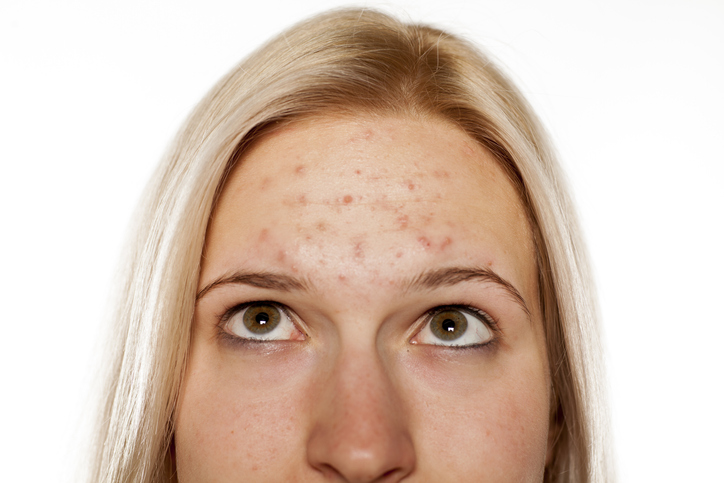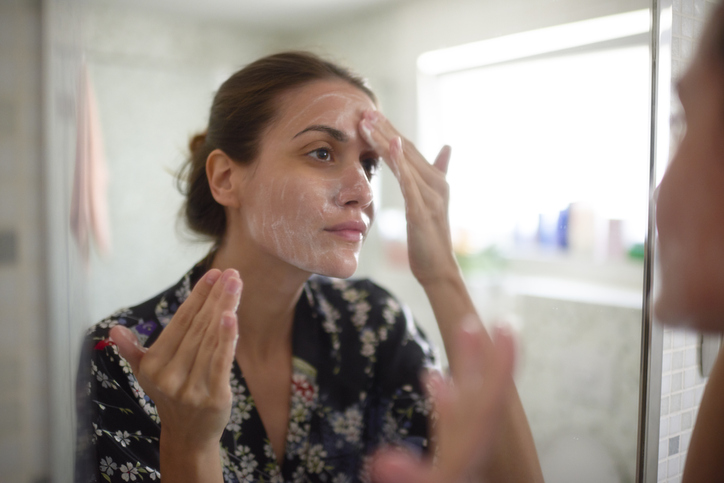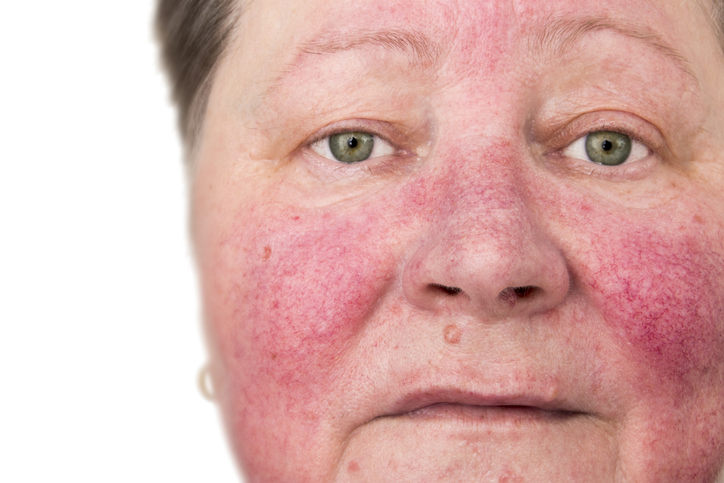Acne
Acne is the most common skin disorder in the world, affecting both men & women of all ages, and it can often have a deep emotional & psychological effect on people. For most people, acne clears up after adolescence, and many have no noticeable scars. For others, acne can last well into their 30s, 40s and beyond. At Forefront Dermatology, formerly Asarch Dermatology, we have vast experience dealing with acne, and we want to make sure you get the treatment you deserve.

What is Acne?
Acne is chronic inflammation of the pilosebaceous units (hair follicle and oil gland) of the face and body that commonly begins during adolescence. Acne appears on your skin as comedones (whiteheads and blackheads), papules, nodules, cysts or pustules. An overproduction of oil, an overgrowth of P. acne bacteria and a clogging of the pores are the main causes of acne. This condition can be aggravated by stress, illness or comedogenic cosmetics. If left untreated, it can lead to pitted or thickened scars.
Body Acne Vs. Face Acne
Body acne can be more resistant to treatment than facial acne because it is more difficult to reach and to keep clean. Medications used for facial acne may also be used to treat body acne, however, depending on the location of the acne, may be difficult to apply.
Try to wear loose clothing (especially during exercise) and pay special attention to the skin beneath clothing items that can increase the plugging of your oil glands and cause friction such as sports bras, sweatbands and hats. Cleanse your skin thoroughly after a workout and avoid body moisturizers that contain butters or oils which can further clog pores. If you cannot shower right after a workout, try an on-the-go cleansing cloth to remove sweat and excess oil.
Your dermatologist may prescribe medication based on the overall condition and evaluation of your acne. Acne can range from occasional breakouts to a severely debilitating condition and must be treated individually. A consultation with your Dermatologist is the first step in addressing your acne.
How Does Acne Form?
Human skin, especially on the face, neck, back, and chest, is covered in thousands of microscopic hair follicles, often called pores. These follicles sometimes over-produce cells and become blocked. Sebum (oil) which normally drains to the surface gets trapped and bacteria begins to grow. An acne lesion starts out as a microcomedone.
Acne Treatment

Acne can be treated by addressing two basic ideas. First, you need an individualized program to minimize the major cause of acne- plugged oil-gland openings. Many prescribed medications effectively control this problem- e.g. Retin-A, Azelex, Differin or Tazorac. Second, you need to prevent the overgrowth of bacteria in the plugged oil glands. You can do this with antibacterial lotions, gels, creams or oral antibiotics. In severe cases, the use of a medication, Accutane, may be prescribed. This medication is a Vitamin A derivative and works well, however, it needs to be monitored closely because of the occasional side effects which your doctor should discuss with you.
Patient Testimonials
“Incredible staff and doctors. Were able to get me in the same day and move treatment along much quicker than others.”
-Chris M.
“Very nice and professional staff! I didn’t have to wait long at all. The skin care specialist, Amanda was incredibly honest, professional and not pushy on the products and services provided. I will definately go back.”
-Jennifer W.
Click Here to view our patient reviews
Other Acne Treatment
Treatment with TheraClearTM offers a virtually painless option with a 90% success rate. TheraClear combines light and vacuum techniques for fast and visible reduction in acne. TheraClear may be a good option for you if you have tried topical solutions and they are not working.
Consider TheraClear to:
- Improve Complexion
- Eliminate Acne
- Clear pores of oils, dead skin skills, and bacteria
- Reduce the appearance of pores
At the Forefront Dermatology, formerly Asarch Dermatology, we also have a new treatment to help address your challenging complexion. Designed to be used on the off weeks of treatments with TheraClear, we are offering a deep cleansing clay treatment. Gentle steam and citrus exfoliation deeply cleanse and prepare the skin for the application of a specialized purifying mask. An additional extraction procedure helps clear clogged pores. This clarifying treatment concludes with the application of DERMAspa RX nourishing and antibacterial serums for refreshed and healthy skin. If your acne has left you with scars, a sublative rejuvenation treatment may be the right choice for you.

What Is Acne Rosacea?
Acne Rosacea is a common, treatable skin disease. Rosacea is more than redness. There are a spectrum of clinical signs with rosacea, including pustular eruption resembling acne.
Acne Rosacea Vs. Acne
Unlike acne, patients generally do not experience oily skin, but rather notice redness, dryness, and peeling. The redness can spread from the nose and cheeks to the chin and forehead, ears and even chest and back.
Who Gets Acne Rosacea?
According to studies conducted by the U.S. government, more than 14 million people are currently living with rosacea. Most patients with rosacea are:
- 30 to 50 years old.
- Fair-skinned, often with blonde hair and blue eyes.
- From Celtic or Scandinavian ancestry.
- Likely to have a family history of rosacea or severe acne.
- Likely to have experienced acne or acne cysts and/or nodules throughout their lives.
- Women are slightly more likely than men to get rosacea. However, men are more likely to get severe rosacea.
Causes Of Acne Rosacea
The exact cause of rosacea is still unknown, but by studying rosacea, scientists have found some indicators:
- Rosacea is genetic. Many people who get rosacea have family members who had rosacea.
- Scientists found that most people with acne rosacea react to a bacterium called bacillus oleronius. This causes their immune system to overreact.
- Although scientists cannot prove that a bug, H pylori, can cause rosacea, it is common in people who have it.
Are There Different Types of Acne Rosacea?
- Erythematotelangiectatic rosacea: Redness, flushing, visible blood vessels.
- Papulopustular rosacea: Redness, swelling, and acne-like breakouts.
- Phymatous rosacea: Skin thickens and has a bumpy texture.
- Ocular rosacea: Eyes red and irritated, eyelids can be swollen, and the person may have what looks like a sty.
Acne Rosacea Treatment
At the Forefront Dermatology, formerly Asarch Dermatology Medical Spa, we treat Acne Rosacea with the ICON Intense Pulse Light System which can improve the skin condition and help reduce the persistent central facial redness.
